9 best yoga mats on Amazon, as recommended by a yoga teacher
Amazon is a go-to for easy delivery, and our list of the best yoga mats reveals the ones to shop for, with various sizes, support, and colours available
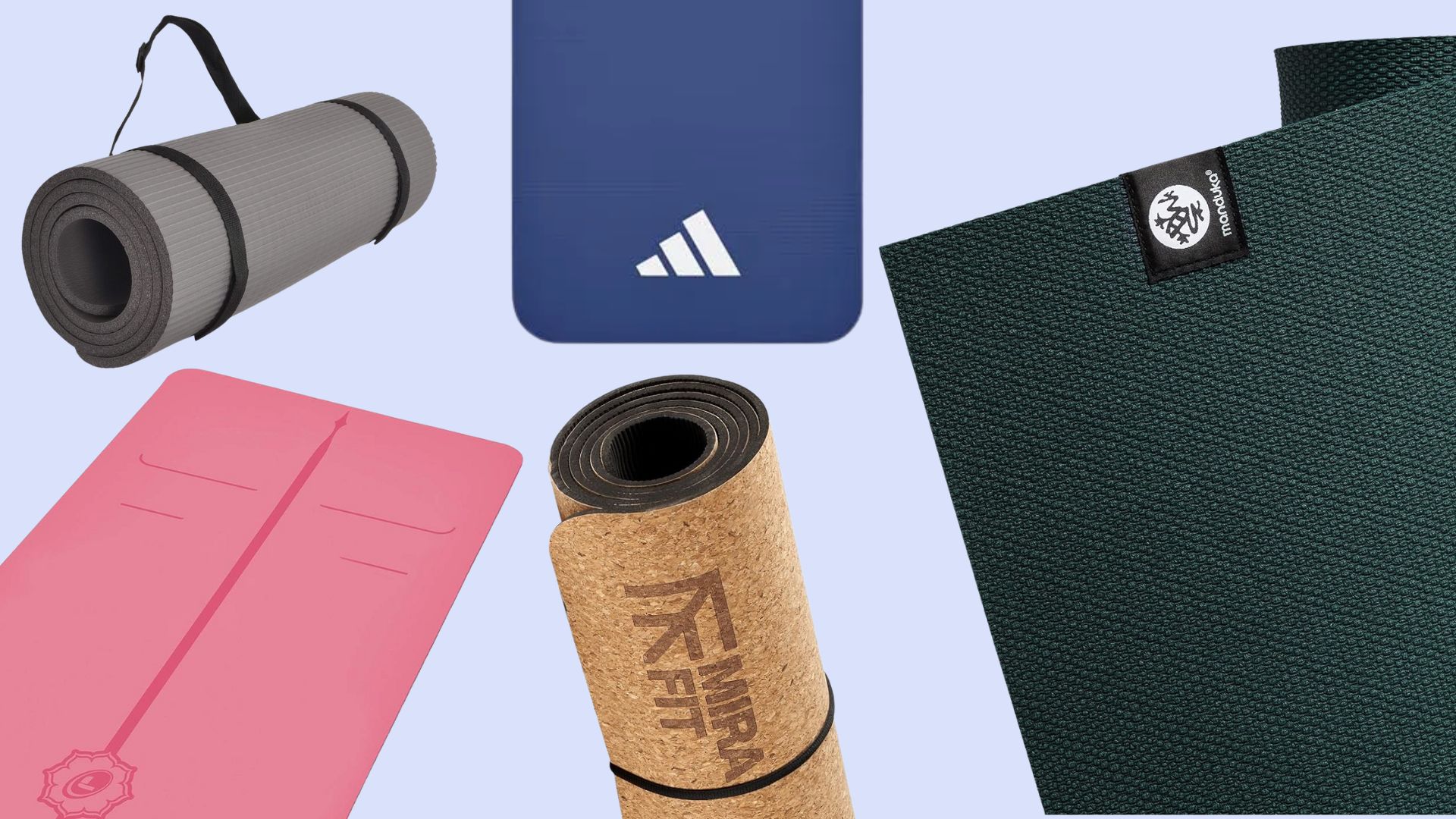

Grace Walsh
The best yoga mats on Amazon for you will still depend on what you plan on using them for. Some people want a grippy mat for advanced practice or hot yoga, while others will prefer one of the best thick yoga mats for extra cushioning.
It can be challenging to find the one for you on an online marketplace without sifting through hundreds of reviews and buyer images, so we've done the hard work for you.
As a certified meditation practitioner and yoga enthusiast, I know the importance of having a supportive yoga mat for your practice. A few years and one too many poor-quality mats later, I've finally cracked the code and learnt how to choose the best yoga mat. Here, I've hand-selected the top picks Amazon has to offer, no matter your budget or preference.
The best yoga mats on Amazon
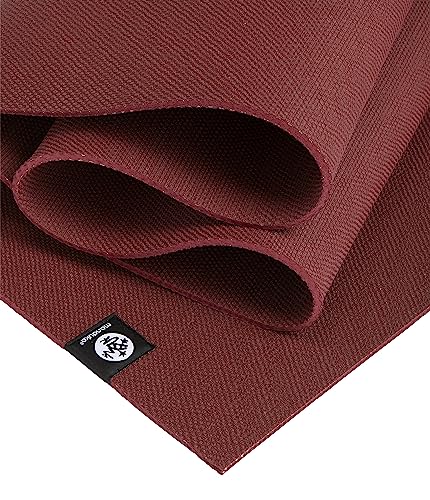
Eco-friendly, high-quality and one of my favourites, this Manduka mat is my outright top pick from Amazon. It offers 5mm of thickness (about standard) and is lightweight and durable with a dry anti-slip material, making it suitable for just about any yoga or Pilates workout at home. The material has a premium feel and stands the test of time - I've had mine for about six years. If you've got Prime, this mat could be with you by tomorrow as well, which is a huge benefit.
Thickness: 5mm
Buy it if: You want a professional-grade mat.
Don't buy it if: You're on a tight budget.

This affordable favourite has everything: thickness, a non-slip texture, an extra-large size and somewhat eco-friendly credentials. Complete with a handy strap for travel and weighing just 0.8kg, it's my recommendation for anyone who only occasionally needs a yoga mat, so doesn't need the best of the best, but still wants a good, durable buy. Naturally, the Manduka Pro or Manduka X Yoga Mat will be better options, but this is still an excellent choice for those on a budget.
Thickness: 6mm
Buy it if: you need a great mat on a budget.
Don't buy it if: You're sensitive to smells - some customers report a strong aroma.
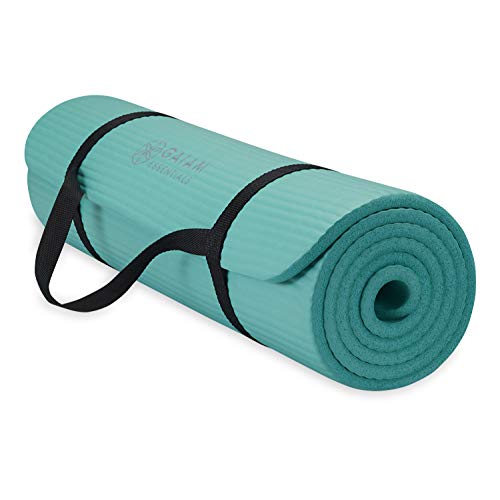
You can expect to pay just under £40 for this thick yoga mat. Another favourite, it's slightly less cushioned than the BalanceFrom mat, making it a good compromise between the thicker and standard support mats for those who want a more versatile option. It's slightly longer than the BalanceFrom mat at 72 inches (6ft), and best used for stability-focused yoga, stretching, Pilates with weights, or general strength training, rather than faster at-home or studio workouts.
Thickness: 10mm
Buy it if: You want an adaptable mat for at-home workouts.
Don't buy it if: You don't want a long yoga mat.

At 12mm thick and 71 inches long, this is certainly a thick mat, designed to support your joints through stability exercises, rather than HIIT workouts. The anti-tear layer on this mat makes it a favourite of mine as it's more durable than other thicker mats I've tried. It's surprisingly inexpensive too, at under £20. Despite its thickness, though, it's still lightweight enough to carry around with the strap, which is included.
Thickness: 12.7mm
Buy it if: You need support and don't want to spend a fortune.
Don't buy it if: You'd prefer a thinner mat.
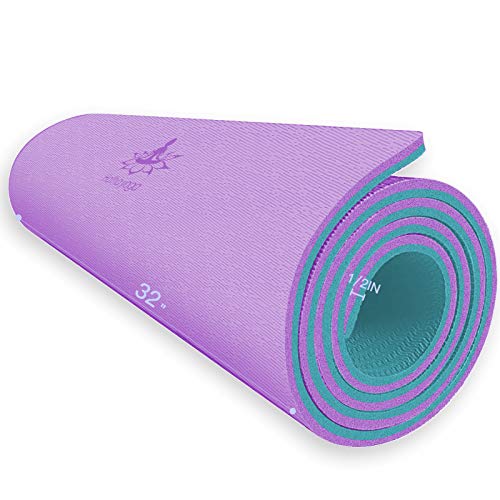
TPE material is non-slip, odourless and easy to clean, and it's available in abundance with this mat, which is extra thick. You can count on this mat for support as it's moisture-resistant and grippy on most surfaces, including tiles and wooden floors, as I discovered. It's one of the thicker mats on the list at 12mm, though, so best suited for stability-minded yoga workouts, any workouts where you spend a lot of time on your back, such as pelvic floor yoga, and stretching exercises.
Thickness: 12mm
Buy it if: You care about non-slip over anything else and want lots of cushioning.
Don't buy it if: You don't need lots of cushioning.
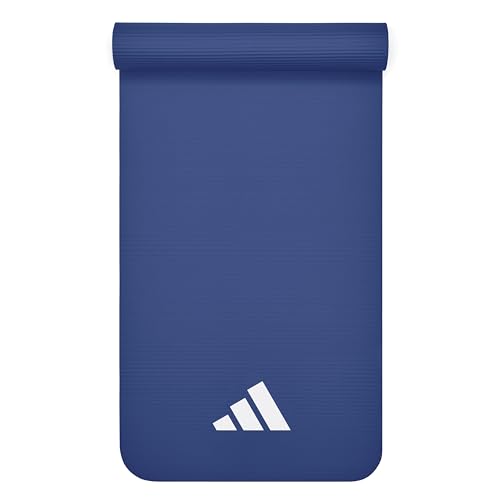
For stability, the Adidas Fitness Mat is a great option. It has a ridged base on the underside of the mat for more security and better grip on most surfaces. I especially love this design feature for tile floors. At under £25, it's one of the more affordable mats on my list, and it comes in a couple of colourways. This mat offers a balance of support and stability suitable for those doing yoga as a workout, HIIT workouts, strength training, and similar bodyweight workouts, rather than gentle yoga sessions, in my view.
Thickness: 7mm or 10mm
Buy it if: You want a mat that won't slip around.
Don't buy it if: You want a thicker option.

Looking to take your yoga or leg raises workout abroad? You'll want a travel-specific yoga mat. These tend to be thinner than others (my favourite, this one by Manduka, is only 2.5mm) as you need to be able to fold them away in your suitcase. Despite the thin material, it feels incredibly premium underfoot, offering just enough support for downward dog or child's pose. For long workouts, I'd recommend something a little thicker, but for short bursts of movement and stretching, this is a winner. It's also suitable for use on all surfaces, with a dot pattern holding the mat in place regardless of whether you're on a damp balcony or a sandy beach.
Thickness: 2.5mm
Buy it if: You need more cushioning around your joints.
Don't buy it if: You want a premium yoga mat to enjoy on holiday.

You won't regret splashing the cash on this one if it's in your budget and if you're doing yoga for beginners. I love the superb quality and eco-friendly materials of this mat. It's super grippy and not too thick, making it the perfect choice for a session that requires a lot of single-leg balancing. It's not suitable for those allergic to latex, but it is one of our absolute favourite luxury picks, looking as superb on the studio floor as it does folded up in your gym bag.
Thickness: 4.2mm
Buy it if: You want to invest in improving your practice.
Don't buy it if: You have a latex allergy.
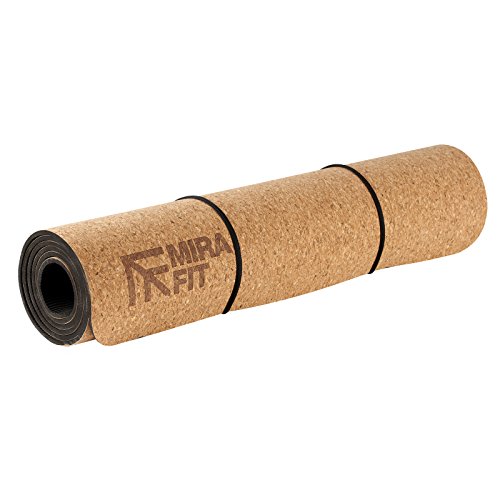
At 6.5mm in thickness, the MiraFit yoga mat is an excellent buy, but the cork makes it ideal for hot yoga or sweatier workouts as the material offers an excellent grip underfoot when wet. It also feels very lightweight to carry, making it perfect for studio sessions and easy to roll up, coming with a handy carry strap.
Thickness: 6mm
Buy it if: You want a mat for hot yoga with more support.
Don't buy it if: You'd prefer a rubber or TPE mat.
How to find the best yoga mats on Amazon
- What will you use the mat for? Firstly, when deciding how to choose a yoga mat, I always tell people to consider what they'll be using it for. Is it just yoga and meditation? Or will your pick of the best yoga mats on Amazon be a multi-use mat that offers enough stability and grip for home workouts, like HIIT and weightlifting?
- What materials do you like? Rubber and cork are more eco-friendly, but they are often heavier and more expensive. While foam mats are ultra-dense and cushioned, they might not be as durable.
- How much cushioning support do you need? If your joints need a little extra care, I'd suggest opting for a thicker mat or a mat that comes with a knee pad for further support. If you don't need extra cushioning, stick with yoga mats around 4mm or 6mm, like the Manduka PRO Yoga Mat or Cork Tec option.
- How often will you use your mat? If you're planning to practice every day, it's best to invest in a durable mat that will last you for years to come (so one made of rubber or cork). Some popular foam mats need to be replaced every 300 - 400 sessions.
- Will you be travelling with your mat? I love to work out on the move, going from the studio to work and back home. If you plan to do the same, you'll want a travel-friendly mat made from a lightweight material. In this case, it's best to opt for foam over rubber, such as the BalanceFrom GoYoga+ All-Purpose 1/2-Inch Extra Thick Yoga Mat. You might also want to choose an option that comes with a carry strap or handle.
Do I need a 4mm or 6mm yoga mat?
If you need a little extra joint support, opt for the 6mm yoga mat. If you intend to use your pick of the best yoga mats on Amazon during higher-intensity workouts or you don't need the extra support, 4mm should be fine.
Generally, most yoga mats are around 4mm thick, but for some, a mat thicker than 4mm can feel too cushioned and cause them to lose their balance, especially if they're using the mat for other workouts such as HIIT, strength training or Pilates. In this case, there are even thinner mats available at 3mm or even 2mm and 1mm, although these are prone to ripping.
For those who want a little extra support, a 6mm thick yoga mat can provide more cushioning for joints, protecting hands, wrists, knees and feet. For those practising yin yoga or yoga nidra, 6mm mats can be more comfortable than a thinner mat. However, it's worth noting, thicker mats are usually heavier and, therefore, not as travel-friendly.
If you find a 6mm yoga mat still doesn't offer you enough support, you can buy yoga mats (many of them are featured on this list) up to 12mm. Alternatively, experiment with a knee pad which you can move around the mat to add extra cushioning where you need it most.
While Ciara first curated this guide, we can confirm these are still the best yoga mats to buy on Amazon in July 2025 following a second review.
Sign up to our free daily email for the latest royal and entertainment news, interesting opinion, expert advice on styling and beauty trends, and no-nonsense guides to the health and wellness questions you want answered.
Ciara McGinley is a meditation practitioner and health journalist. She qualified as a meditation teacher with the British School of Meditation in 2020 and is the founder of Finding Quiet, a series of classes, workshops and retreats that combine meditation practices and mindfulness techniques to make mindful living realistic in an always-switched-on modern world. She is all about bettering that mind-body connection but believes wellness looks different to everyone.
Ciara is also the former Health Channel Editor at woman&home and has covered all things health and wellbeing for years, from fitness to sleep to relationships.
- Grace WalshHealth Channel Editor
